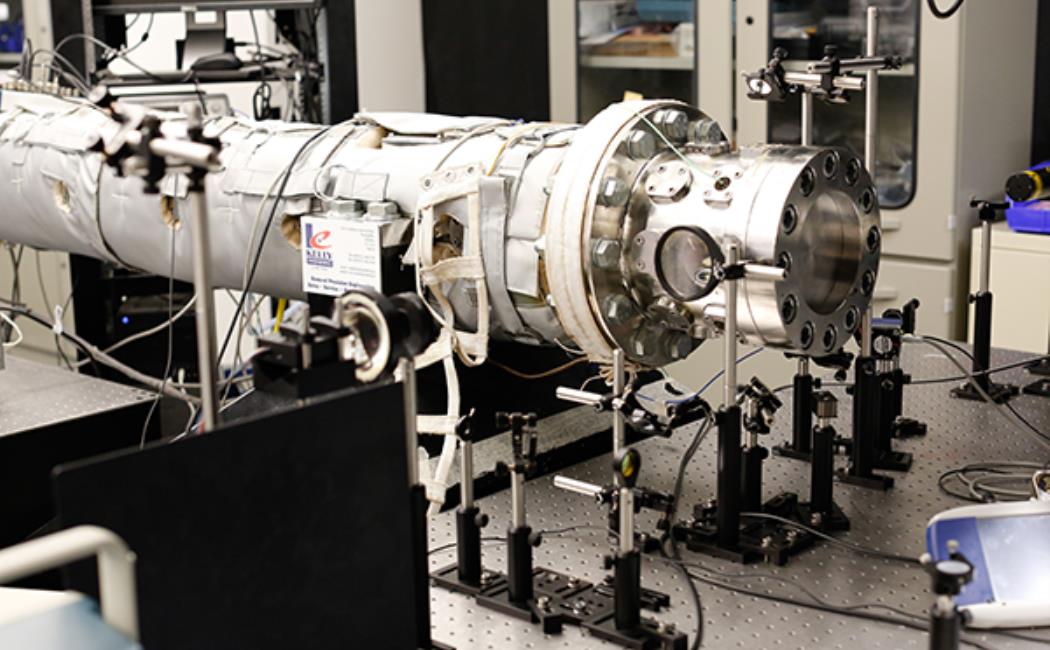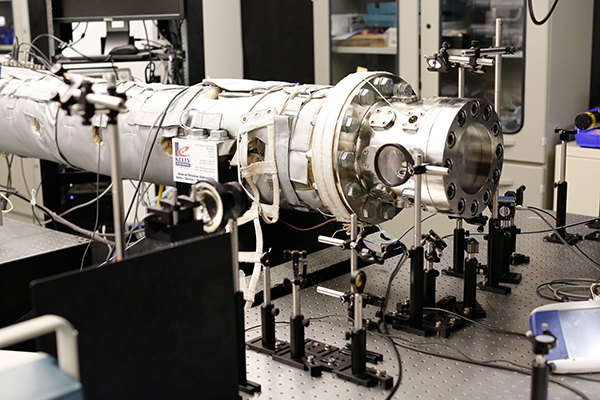


27 November, 2016


The search for better engine performance powered by less polluting fuels will benefit from a new modeling technique developed at KAUST1.
Reducing the greenhouse gases (GHG) released from the production and burning of fuels like diesel and gasoline — significant contributors to climate change — is a huge challenge facing the transportation industry.
Aamir Farooq and colleagues from KAUST’s Clean Combustion Research Center (CCRC), working with the Fuel Technology Team at Saudi Aramco, used an innovative technique for testing the properties of light naphtha, a fully blended, low-octane, highly paraffinic fuel. Farooq explains that this technique could open the potential for more advanced engines to run on fuels that release fewer GHG emissions.
“Optimizing fuel performance and engine designs must go hand-in-hand if we want to reduce emissions and improve engine efficiencies,” says Farooq. “Although gasoline and diesel engines have their advantages, we need a new type of engine that utilizes the strengths — while avoiding the drawbacks — of current engine technologies.”
Compression-ignition and spark-ignition engines, commonly referred to as diesel and gasoline engines, have fuel efficiencies of only 35-40 percent. A new engine design, called a gasoline compression-ignition (GCI) engine, however, promises efficiencies of up to 55 percent as well as releasing fewer harmful soot and nitrogen oxides, compared with current engines.
But, realizing these benefits requires a fuel with auto-ignition properties somewhere between gasoline and diesel.
“The auto-ignition properties determine the performance of the engine, and so has a significant influence on the engine’s design,” explains Farooq. “Like all fuels, light naphtha contains hundreds of compounds, so to perform detailed engine optimization we need a simpler model of the fuel, called a surrogate fuel.”
The researchers compared auto-ignition properties of light naphtha with two surrogates — a simple, primary reference fuel surrogate and a more complex surrogate — over a range of temperatures,
pressures
and fuel/air ratios. Operating at high temperatures, they first used a shock tube to study the auto-ignition behavior of the surrogates over different pressures. However at lower temperatures reactions take longer, so a rapid compression machine was used to extend the observation time for the reactions.
They found the complex surrogate almost perfectly matched the light naphtha, particularly at lower temperatures, providing a full picture of its auto-ignition characteristics.
“Our work has produced the first auto-ignition model for light naphtha, and is being used by Saudi Aramco’s Research Center in Detroit to optimize GCI engine designs,” says Farooq.
Click here to read this news item on KAUST Discovery where it was originally published.